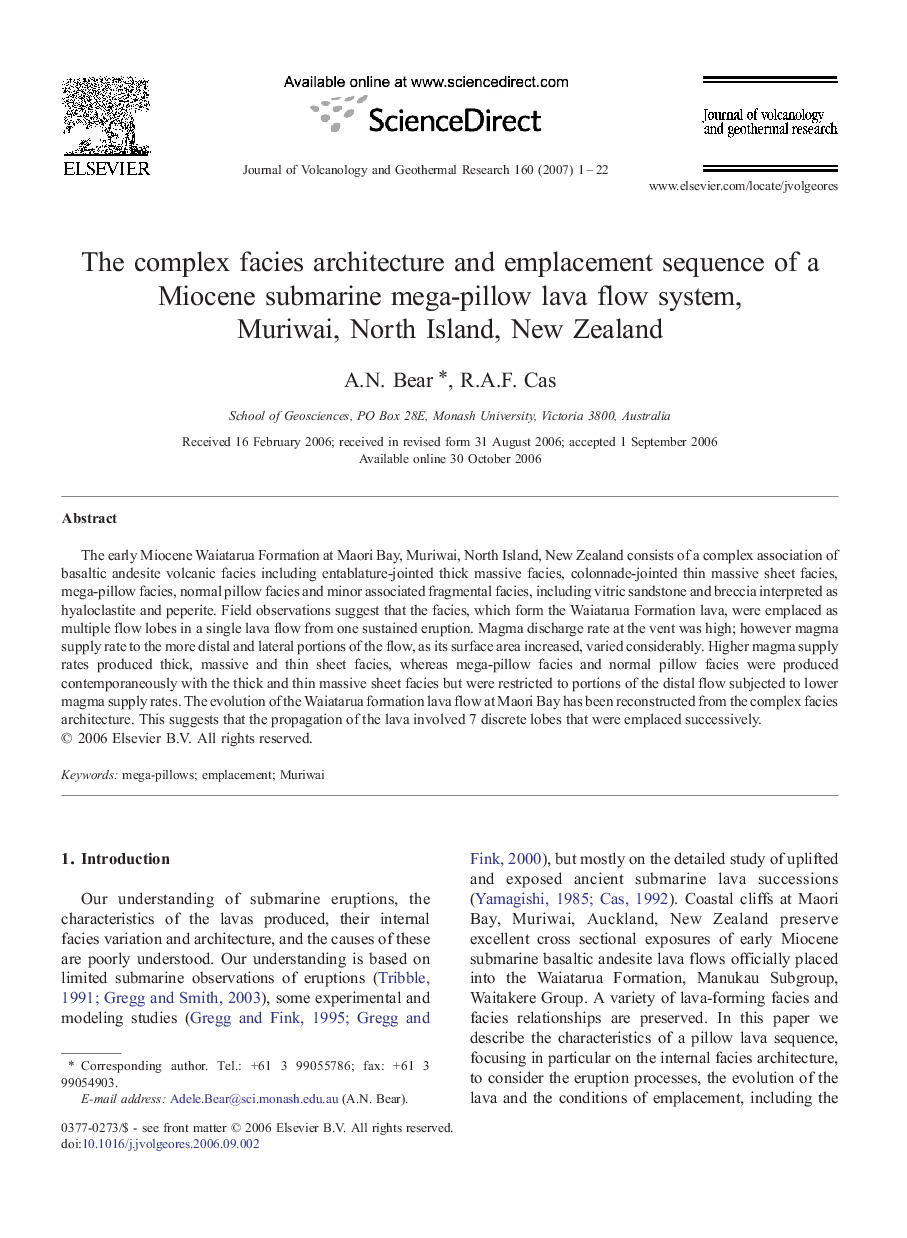| Article ID | Journal | Published Year | Pages | File Type |
|---|---|---|---|---|
| 4713976 | Journal of Volcanology and Geothermal Research | 2007 | 22 Pages |
The early Miocene Waiatarua Formation at Maori Bay, Muriwai, North Island, New Zealand consists of a complex association of basaltic andesite volcanic facies including entablature-jointed thick massive facies, colonnade-jointed thin massive sheet facies, mega-pillow facies, normal pillow facies and minor associated fragmental facies, including vitric sandstone and breccia interpreted as hyaloclastite and peperite. Field observations suggest that the facies, which form the Waiatarua Formation lava, were emplaced as multiple flow lobes in a single lava flow from one sustained eruption. Magma discharge rate at the vent was high; however magma supply rate to the more distal and lateral portions of the flow, as its surface area increased, varied considerably. Higher magma supply rates produced thick, massive and thin sheet facies, whereas mega-pillow facies and normal pillow facies were produced contemporaneously with the thick and thin massive sheet facies but were restricted to portions of the distal flow subjected to lower magma supply rates. The evolution of the Waiatarua formation lava flow at Maori Bay has been reconstructed from the complex facies architecture. This suggests that the propagation of the lava involved 7 discrete lobes that were emplaced successively.
